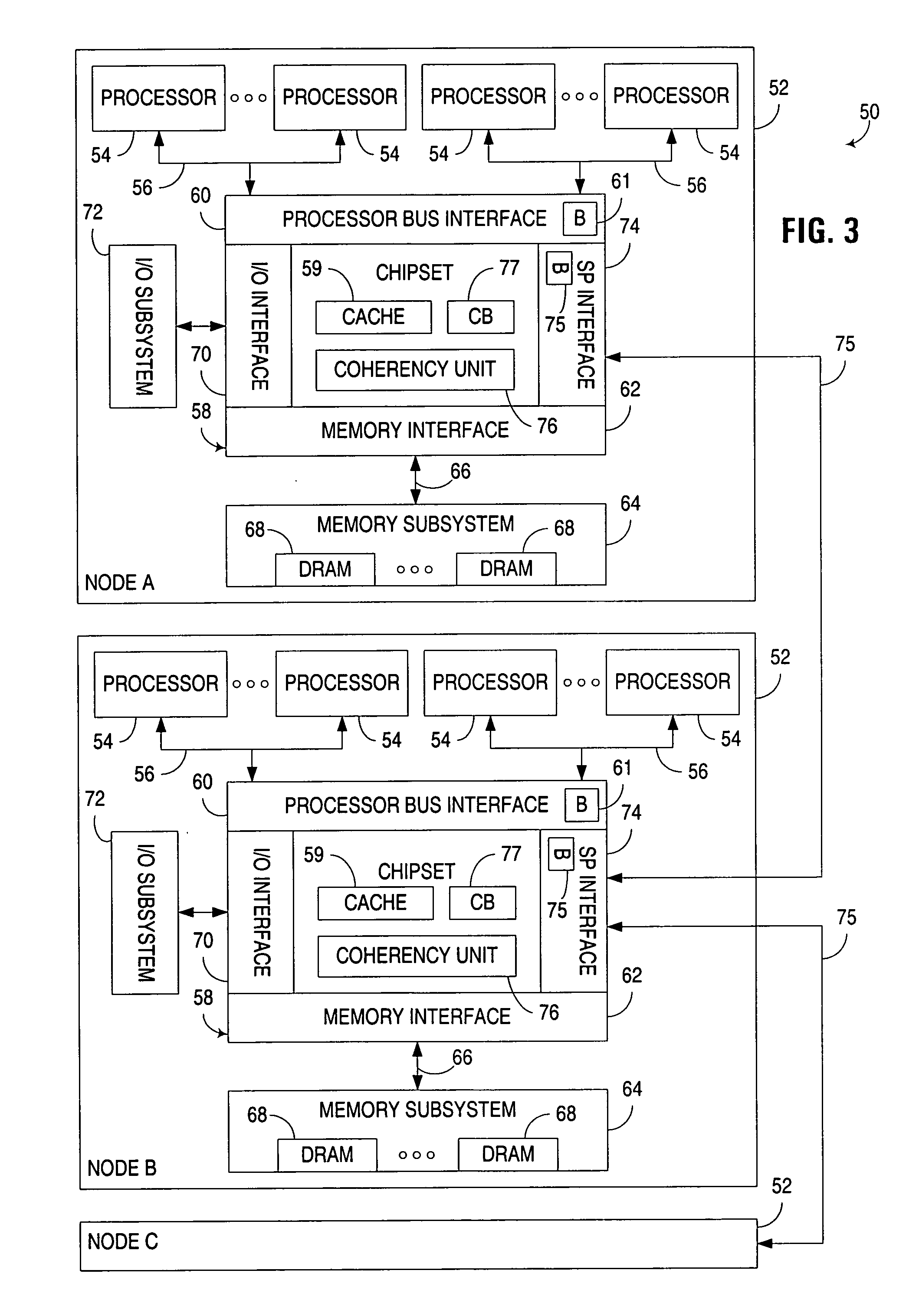Early coherency indication for return data in shared memory architecture
a shared memory and return data technology, applied in the field of computer and data processing system, can solve the problems of significant bottlenecks that can occur in multi-processor computers, associated with the transfer of data to and from each processor, and often referred to as communication costs, and achieve the effect of reducing the overall latency for handling memory requests and little or no latency
- Summary
- Abstract
- Description
- Claims
- Application Information
AI Technical Summary
Benefits of technology
Problems solved by technology
Method used
Image
Examples
Embodiment Construction
[0024] The embodiments discussed and illustrated hereinafter utilize early coherency indication to enable a communications interface to anticipate a data return from a source, and based upon that anticipation, prepare for communication of the return data, e.g., by planning out and executing any bus arbitration / signaling, preparing a data response packet, etc., prior to data return, such that when the data is returned from its source, it can flow directly to the communications link with minimal latency and with a minimal amount of buffering.
[0025] Embodiments consistent with the invention generally reduce latency and buffering requirements through two related mechanisms. First, the update of a coherency directory is treated as a separate step from performing a lookup of the coherency directory, and furthermore, is removed from the critical path for the processing of the memory request. By doing so, the update to the coherency directory is essentially made independent of enabling the...
PUM
 Login to View More
Login to View More Abstract
Description
Claims
Application Information
 Login to View More
Login to View More - R&D
- Intellectual Property
- Life Sciences
- Materials
- Tech Scout
- Unparalleled Data Quality
- Higher Quality Content
- 60% Fewer Hallucinations
Browse by: Latest US Patents, China's latest patents, Technical Efficacy Thesaurus, Application Domain, Technology Topic, Popular Technical Reports.
© 2025 PatSnap. All rights reserved.Legal|Privacy policy|Modern Slavery Act Transparency Statement|Sitemap|About US| Contact US: help@patsnap.com



